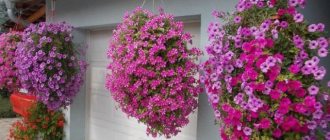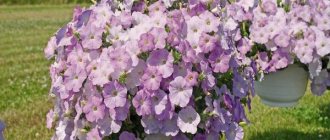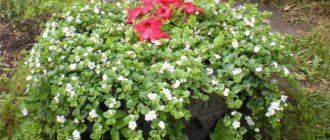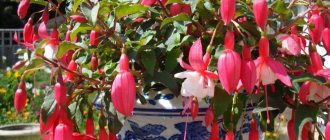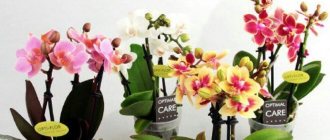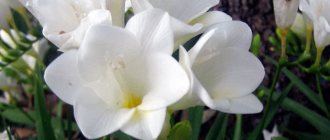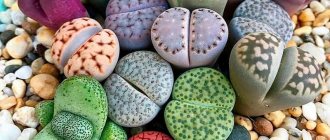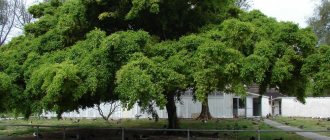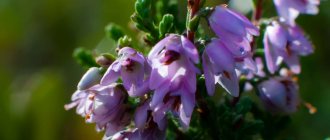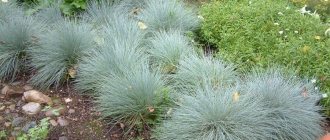Ampelous petunia is a bright and lush flowering plant, which is often used to decorate balconies and verandas, as well as vertical gardening in landscape design. Abundant and long flowering has made it a particularly popular choice of most domestic and foreign gardeners.
Petunias in hanging pots (plant pots) serve as a traditional decoration for urban and country landscapes and home interiors.
Plant Features
Petunia is a genus of perennial plants belonging to the nightshade family. In garden culture, flowers are grown as annuals . The leaves are soft, slightly pubescent, arranged in an alternate order. The buds are formed singly in each shoot axil.
The ampel group is characterized by thin long stems creeping along the soil or drooping in ampels - from 50-80 cm to 1.5-2 m. It also includes a separate category of so-called cascade (or semi-ampel) species. The main difference between them is that in cascade varieties the shoots are thicker and first grow upwards and to the sides before sagging under their own weight, while in ordinary hanging varieties they hang freely immediately.
Thanks to the flexibility of the lashes, this plant can be easily given any desired shape. It is suitable both for growing in hanging pots and baskets , that is, vertical gardening, and for cultivation in open ground in flower beds and flower beds as a ground cover .
When growing petunias as ground cover, long vines spread over a large horizontal area and turn it into a single variegated “carpet.”
Classification of ampelous petunias
In the huge number of existing hybrid varieties and entire varietal groups, petunias are primarily distinguished by several parameters that characterize flowers:
| Parameter | Options |
| Flower shape |
|
| Flower sizes |
|
| Coloring of corolla and petals |
|
Commercial classification
When choosing the colors you are interested in from catalogs, knowledge of commercial classification may be useful.
Thanks to the variety of colors, sizes and shapes of flowers from petunias, you can create spectacular unique compositions
The following categories or variety series of ampelous petunias with improved decorative characteristics are distinguished:
- supertunia - a large-flowered type with especially long vines that can reach 2 m;
- Surfinia - plants of this group are distinguished by their particular endurance and growth rate. Canes up to 2 m. Flowering earlier, flowers are medium or large, color ranges from white, blue and pink (no warm shades);
- minitunia - lashes from 0.8 to 1 m. The flowers are small, but the flowering is abundant. Relatively resistant to rain and wind;
- fortunia - compact plants, canes can reach 1 m, bloom profusely, flowers are small (up to 5 cm in diameter).
Popular hanging varieties
At the moment, the best choice, especially for a novice gardener, are F1 hybrids, as they are the most hardy and resistant to adverse conditions. We offer brief descriptions of some popular varieties of hanging petunias.
Wave F1 series The length of the shoots is up to 120 cm, the diameter of the flowers is 5-7 cm. The shade of the petals can be blue, purple, pink. Flowering is abundant and long lasting. The plant is resistant to adverse weather conditions and creates a carpet when planted in open ground.
In the photo - ampel petunia variety Easy Wave (Blue)
Series Velvet F1 Shoot length 0.8-1 m. Flowers with a diameter of 5-7 cm, dark pink, salmon or purple. Flowering later. An interesting difference of the variety is the abundance of nectar in the flowers , due to which they are especially attractive to bees.
In the photo - petunia (surfinia) Purple Velvet
Opera Supreme F1 series Shoots up to 1 m, highly branched. The variety is characterized by reduced sensitivity to lack of lighting. The flowers are 5-6 cm in diameter, the petals can be pink, blue, white, crimson.
In the photo - petunia Opera Supreme (Raspberry Ice)
Snow Queen The name of the variety is quite justified: its flowers come only in white. They have a delicate pleasant aroma. The diameter of the corollas is small, up to 3 cm, but the flowering is very abundant. The shoots are quite short - up to 80 cm.
Petunia seeds "Snow Queen" from various manufacturers
Explorer Series Scourges 0.8-1 m, do not break from the wind. Flowers are 5-7.5 cm in diameter. Flowering begins early and continues until autumn. Features of the variety include a waxy coating on the petals , due to which the flowers are resistant to precipitation and high humidity.
Pictured is Petunia Explorer (Pellets Pink)
Protection from diseases and pests
Ampelous petunias are distinguished by enviable health and are attacked by insects only in unfavorable conditions. The main flower pests are aphids, spider mites, and thrips. The fight against them begins in the early stages.
The first sign of a spider mite is the thinnest cobwebs on the leaves. Thrips settle on bushes during the flowering period, damaging leaves and anthers. Aphids quickly spread throughout the plant. When examining the back side of the leaves, you can see whole hordes of black or green bugs that feed on plant juices.
To kill insects, systemic insecticides “Teppeki”, “Aktara”, “Konfidor” are used. Processing is carried out strictly according to the instructions.
Variety selection
When choosing petunias for your garden plot or home landscaping, pay attention to the following nuances:
- optimal length of lashes - to decorate a balcony you can take a relatively compact plant, and to create a “dry stream” in the garden, varieties with long shoots are more suitable;
- endurance - for planting in open ground, especially if the risk of getting wet is high, it is better to choose small-flowered varieties;
- “capriciousness” in care, including the need for pinching and frequency of watering, resistance to diseases and pests. It is better for beginning flower growers not to choose varieties that are too delicate and whimsical;
- demands on lighting;
- timing and duration of flowering;
- matching the color of flowers when creating compositions with contrasting or smooth transitions of shades - varieties planted nearby should be combined harmoniously;
- flower size - for the foreground it is better to use large-flowered double varieties with an original shape of petals, and for the general background, for example, when decorating the wall of a house, small-flowered varieties are more suitable.
An experienced florist from Siberia talks about his favorite varieties and their benefits in the following video review:
Buying petunias
The plant can be purchased already flowering or grown independently. In each case, a number of rules must be followed.
Seeds
When purchasing seeds, pay attention to the shelf life. The packaging must be intact and in good condition. It is desirable that it provides the most complete information about the varietal qualities of the plant and care features.
To be on the safe side, it is better to buy 2-3 packages of seed material of the variety you are interested in from several manufacturers and in different places.
Please note that the seeds can be in granules or dragees, that is, coated. This makes planting easier, since they themselves are very small, but the main thing is that, when dissolved, the shell supplies the plant with nutrients.
Petunia seeds are very small and collecting them from most varieties (hybrid ones labeled F1) simply does not make sense
Seedling
When choosing seedlings, pay attention to the appearance of the plants: they should be strong, without visible damage, mold, mucus or darkened areas.
Inspect the leaves to make sure there are no pests such as whiteflies, aphids or mites. If the flowers are sold in clear cups, inspect the roots. They should be well developed, without dry or rotten areas. When purchasing seedlings in a large cassette, make sure that there are no empty cells covered with leaves.
Strong, healthy seedlings take root faster after planting in a permanent place
Flowering plants
As with seedlings, check for external signs of the plant's condition. Make sure that the lower parts of the shoots have not begun to become bare.
The lashes should not be too long, otherwise the flower may be damaged during transportation.
Plants purchased in compact pots must be immediately transplanted into containers of suitable volume (5-10 l)
Transplantation to a permanent place
When choosing a place where the ampelous petunia will grow, you must remember that this is a plant of a hot and humid climate, so it is important to provide it with enough light, otherwise the flowering will not be lush and long-lasting, and the stems will become bare and unnaturally long.
Priming
This hanging plant is ideally suited to soil with medium acidity (pH 5.5-6.5), high permeability and rich in nutrients. Often, for this purpose, ready-made soil for surfinia is purchased, which meets all the necessary parameters.
Since plants are most often located in bright sun, it is recommended to add hydrogel to the soil. Its presence will protect the roots and substrate from drying out. Before adding to the planting soil, the hydrogel should be soaked in water, and after increasing its volume, mixed with the soil. This will allow you to see how much soil can fit in the pot. If you do not soak the hydrogel before planting, then at the first watering it may swell and push some of the soil and roots out of the pot.
Landing
The pot at the bottom must have several drainage holes through which excess water will drain during watering. The container should be of sufficient diameter, but you should not plant several specimens back to back, since the bushes will continue to intensively grow green mass after planting. To make the pot look lush, you can plant 2-3 specimens in it at the same time, leaving an equal distance between them.
A layer of expanded clay 2-3 cm thick is placed on the bottom, after which the flower is placed and carefully covered with soil. The soil needs to be pressed down a little and watered.
Growing conditions
Caring for ampelous petunia is based on standard agricultural technology and implies the following rules:
- lighting at least 12 hours a day, otherwise the plant will form few buds;
- daily watering, on hot days in the morning and evening;
- fertilizing with mineral fertilizers (for flowering plants every 5-7 days);
- pinching shoots at the stage of formation and when the lower part is exposed (2/3 of the length);
- constant removal of fading flowers so that the plant does not waste energy on ripening seeds.
When grown in a perennial crop, in order to preserve petunia until spring, in the fall its shoots are cut off radically, leaving about 10 cm from the ground, after which the pot is placed in a bright room with a temperature of +7...10 ℃. The plant needs to be watered approximately once a week. In the spring, you need to do formative pruning, and then transfer the flower to a larger container with enriched soil.
At home, it is quite difficult to ensure a safe winter for petunias, so many people prefer to acquire new plants at the beginning of the season.
Bush formation
The main secret of growing ampelous petunia at home is the correct formation of the plant. Lush bushes that can be seen on sale grow not without special care and the participation of a gardener. In order for the side shoots to bush and the flower to become thick and beautiful, systematic pinching is required.
The first pinching is carried out when 5-6 leaves are formed on the main shoot. You just need to pinch off the top part. In the coming days after this, new leaves will appear from the remaining leaf axils, which will quickly grow into lateral branches.
Then pinching should be done every time the green shoot grows to 15-20 cm. This should be done during the first two months. This formation delays the beginning of flowering by 2-3 weeks, but ultimately allows the plant to show all varietal characteristics and appear in all its glory.
For adult bushes, pinching is used for rejuvenation purposes. This may be necessary in August, when flowering becomes less intense and the branches begin to gradually lose leaves. Such shoots must be cut off, and in their place young shoots will appear, on which large, full-fledged buds will develop.
Recently, hybrids of ampelous petunia have appeared that do not require pinching. Such specimens bush on their own without additional shaping, but they are quite rare.
Reproduction of ampelous petunia
Petunia is propagated generatively, that is, by seeds and vegetatively by cuttings. Sowing of seeds is carried out in February to obtain a flowering plant in May. At first they are covered with glass or film. On average, seedlings hatch in 10-15 days. After this, the greenhouse begins to be ventilated, and when leaves appear, the film is completely removed. It is advisable to provide additional light to the seedlings so that the daylight hours are about 14 hours, and as they grow, increase to 20 hours.
If after 2 weeks the seedlings have not hatched, you don’t have to wait any longer - the sprouts that appear later will still be too weak and painful.
Table of recommended temperature conditions:
| Growth period | Temperature, ℃ |
| Before seed germination | +23 |
| After emergence | +18 |
| After the pick | +16 |
Seedlings are planted in separate pots with a diameter of 5-7 cm when three leaves appear
Plants are pricked several times (2-3) before being transplanted to a permanent location. If planting in open ground is planned, then it is carried out after the threat of return frosts has disappeared. When growing in an ampelous culture, it is important to provide the plants with a sufficient area of nutrition, allocating a container of 5-10 liters to each adult flower.
Although petunia requires attention and care, its lush blooms will be a worthy reward for your efforts. By choosing one or more suitable varieties, you can create your own unique composition!
Seedling care
If everything is done correctly, the first shoots will be visible in a week. Care for flower seedlings is very important:
- watering;
- feeding;
- lighting;
- temperature regime;
- dive;
- topping;
- control of diseases and pests.
Watering
Petunia seedlings need moderate humidity. The soil should not be wet. This can lead to rot and disease. But overdried soil is also detrimental to seedlings.
Young plants need drip watering. For watering, use a syringe or pipette, pour at the root, do not get on the leaves. You can pour water over the wall, or use a tray for watering. Water for irrigation needs to be settled, at room temperature, or slightly warm.
Two minutes before watering, add lemon juice to the water. Water the flowers, depending on the weather. If the day is sunny, water in the evening. If the weather is cloudy, then watering is carried out in the morning.
Top dressing
Feeding young plants is also very important. It is recommended to apply fertilizers systematically. In the first two weeks, you will need to spray the petunias with a weak solution of potassium permanganate or Pervikura. After the appearance of the fourth leaf, the plants are fertilized with a solution of yellow “Kristalon” in the amount of half a tablespoon per 5 liters of water.
Fertilizing can be done either by foliage or by adding fertilizer to the soil. For foliar feeding, use “Kristalon” and “Uniflora micro”. Seedlings are fed three times a week, using two methods alternately. After picking, it is recommended to use fertilizers that stimulate root growth. Such as “Aquarin”, “Solution”, “Plantofol”. Everything is prepared according to the instructions.
Temperature
Petunia seeds germinate at 25 degrees. If the temperature is low, the seeds simply will not sprout, and if it is higher, the plants can become very stretched and begin to hurt. After the shoots appear, you will need to open the plants twice a day, starting at 20 minutes.
The covering is completely removed when the plants grow to it. The temperature is reduced to 20 degrees during the day and to 16 at night.
Lighting
Flowers need lighting almost around the clock. Good lighting allows young plants to grow well and speeds up the flowering period. The duration of the required daylight hours is 12 hours. The lighting is turned on in the morning at 7 o'clock and turned off in the evening at 22 o'clock.
Additional lighting is installed at a height of 20 cm from the seedlings. For this purpose, LED, fluorescent, and phytolamps are used.
Picking
Picking seedlings is carried out only if they grew in common boxes. For picking, select 250 ml cups with holes for drainage. When the shoots are 5 cm in height, begin picking.
- Using a sharp garden knife, plant the plants to a depth of 3 cm. The knife is inserted at an angle of 45 degrees. It turns out that by pinching off a piece of the root, the development of the root system is stimulated.
- The flower is placed in a separate container.
- Add substrate to fill the voids. Watered.
- The temperature is reduced by three degrees for a week, and sunlight is avoided.
- You can feed only after a week and a half.
If the seedlings are grown in tablets, then the seedlings can be planted in an individual container along with it.
Pinching
Pinching is done for all varieties of petunias, except for hanging varieties. It consists of removing a piece of the stem at the 4th and 5th leaf along with the growing point.
Young shoots will emerge from each leaf axil, and in the future such plants will bloom profusely. After half a month, a second pinching is carried out. To get a lush bush, pinching must be done several times.
Improper watering and excess moisture can lead to blackleg disease. A dark spot forms at the base of the shoot, the tissue underneath becomes soft and rots. A constriction forms and the plant falls.
All diseased seedlings must be destroyed, and the soil must be watered with a solution of potassium permanganate or Formalin.
Often, due to excess moisture, petunia seedlings may experience iron deficiency. In this case, iron chelate, which is contained in the Ferovit product, should be added to the soil. Conversely, excessive dryness leads to the appearance of spider mites, which settle on the leaves. For the fight, special drugs are used: Neoron and Fitoverm.
Reviews from flower growers
Evgenia, 35 years old, Kostroma
I love petunias, and especially the Wave series. I plant both in flowerpots and in open ground, the flowerbed turns out to be a real carpet of flowers, they bloom very profusely! True, pinching with this in mind sometimes takes almost an hour, but that’s okay, it even somehow calms you down. The flowers tolerate rain and wind well. I feed the petunias that are in the pot, and the ones that are in the flower bed, in my opinion, do well without it.
Maria, 28 years old, Ufa
Last year I planted Parple Velvet. The only thing I didn’t like was that the manufacturer did not cover the seeds with a shell; without this they are very tiny, it was difficult even to pick them up with tweezers. I planted it in March, there was no point in earlier in our region, everything came up. I transplanted them into flowerpots in June, they grew quickly, and branched even without pinching. The view from the street was amazing, I even wanted to stand in front of my own window longer! Although the flowers are relatively small, there are so many of them that in some places the greenery underneath them was not visible. We endured a slight frost with fortitude and didn’t even get sick.
Nadezhda, 44 years old, Omsk
My favorite is Explorer. I usually buy seedlings; by the way, it’s interesting that the shoots immediately grow wider than upward. I keep it on the balcony, but I try to fix the pots higher, above my head, otherwise you won’t really admire this beauty. Our area is windy, but the lashes are strong and have never broken off yet. They require a lot of land, the year before last I planted two flowers in one flower pot, then replanted them, and they grew at triple the speed.
About the timing of sowing seedlings
Let me give you some advice: do not rush into sowing unless you are sure that by the time the seedlings are ready to be transplanted into the ground, warm weather will have established in your area. It is better to sow later than to watch the seedlings overgrow, stretch out and weaken. It is better to plant slightly underdeveloped seedlings in the ground: in good conditions they will quickly catch up both in growth and development.
But in order for plants that have become overgrown and aged from stress to be able to recover, you will have to put in a lot of effort, but even this does not guarantee results.
We have made such mistakes in the past, so now we are in no hurry to start the planting season.
All the best.
- Flower care in September

